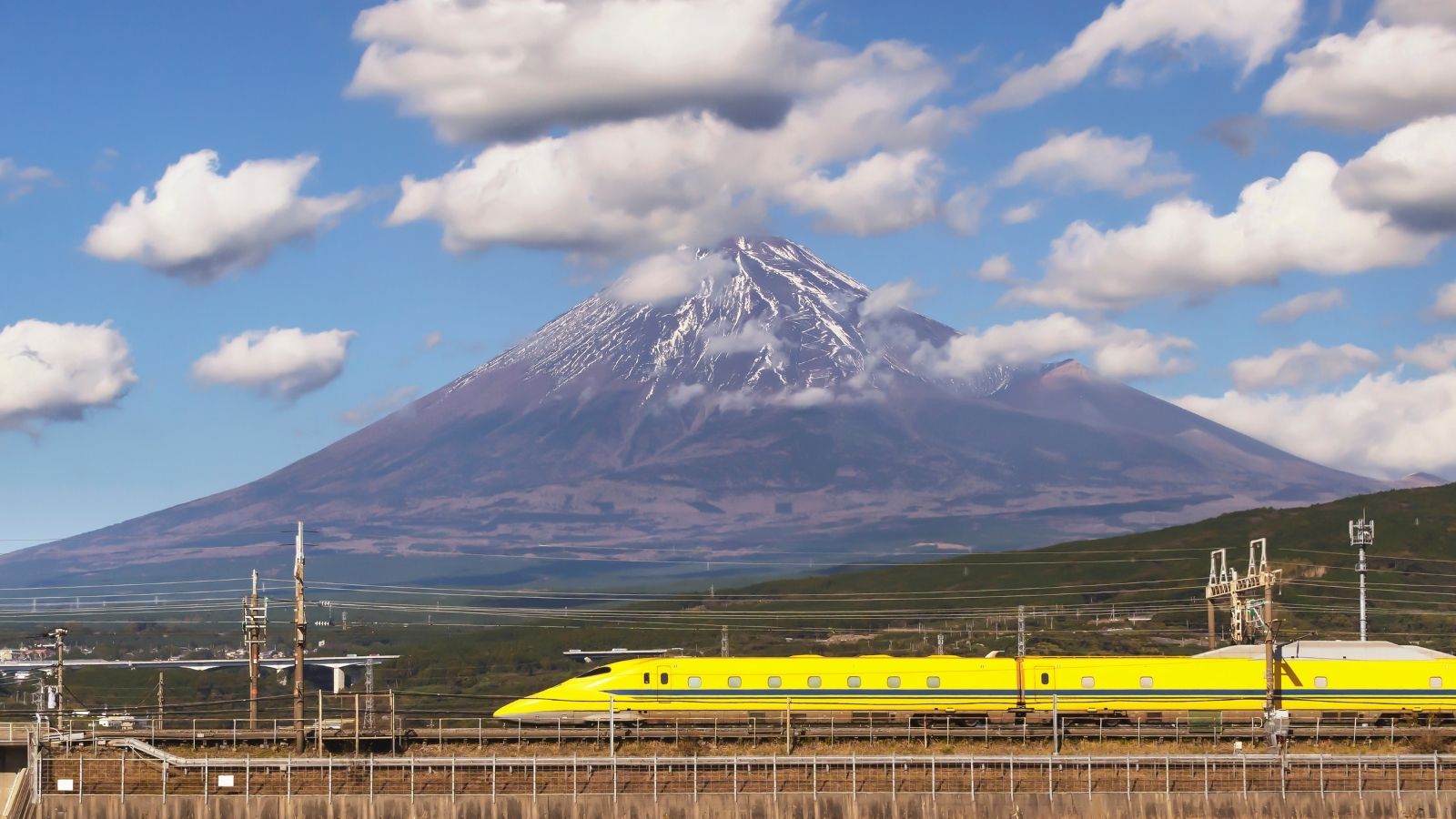
SHINKANSEN: THE ICONIC AND FAST JAPANESE RAILWAY LINE
If you want to travel to Japan , observing its wonderful mountains or ocean beaches, you cannot ignore the very fast and punctual Japanese trains. We are talking about Shinkansen (新幹線), a name that literally means "new railway section" and which represents the set of high-speed train lines on which special means of transport with peculiar shapes travel, also nicknamed "bullet trains" .

A Shinkansen RS E6 high-speed train in Saitama © SiraFilm
The history of these vehicles began in 1959 with the construction of the Tōkaidō Shinkansen , the stretch from Tokyo to Osaka. Subsequently, over the years, the railway network has expanded more and more, making trains the fastest and most economical way to get around Japan: the Japan Rail JR network today reaches a maximum speed of 320 km/h , allowing tourists to get anywhere and in a very short time, simply by purchasing the Japan Rail Pass , a season ticket that allows unlimited access to the vast majority of high-speed trains.

On board a Shinkansen in Tokyo © Simon Launay
In recent years, Shinkansen has tried to make traveling between two cities even faster and more convenient by developing magnetically levitated Linear Motor Car trains, vehicles with incredible technical characteristics, which in 2015 set the new world rail speed record. , reaching a maximum peak of 603 km/h .

A conductor at Ueno Station, Taito-ku © Zhipeng Ya
Trains and stations are characterized by some precautions and peculiarities that definitely make them one of the most particular transport sector realities in the world.
A couple of curiosities about Shinkansen? The train, for example, regularly stops with absolute precision at the carriage number placed on the platform, so that the passenger does not have to move again with his luggage; furthermore, the conductor gives a very short presentation before leaving and then bows every time he enters or exits the carriages . The same thing is done by the dozens of cleaners who in a very short time, at each stop on the route, get on the train and carry out sanitizing operations on the carriages in an incredibly effective and fast manner.

Shinkansen at Kotayama Station © ToreF
In Shinkansen train stations, ekiben (駅弁) are a must, special bento boxes , or boxes for storing food during long-distance travel, which can contain various foods (often traditional specialties specific to the route you are traveling on) ready to eat and divided into neat compartments .

Tokyo Station © Victor Deweerdt @subzero
This railway network is much loved and for years has been considered an integral part of Japanese culture , so much so that in Japan a lot of Shinkansen-themed material and merchandising is conceived and created regularly and in many different editions. Products ranging from very faithful small-scale models to t-shirts, from mugs to socks, through thermometers and patches: everyone can have a souvenir to take home as a reminder of the fantastic train journey.

Torikai Rail Yard Osaka © EvergreenPlanet
This year and for the summer of 2021 , the Shinkansen celebrates the famous manga character "Hello Kitty" by dedicating a train to her, in service between Shin-Osaka and Hakata, with two kawaii pink carriages. The first is called “Hello! Plaza" and contains an exhibition space where visitors can try specialties and purchase souvenirs; the second carriage, however, is called “Kawaii! Room” and contains a series of activations, including digital ones, completely dedicated to Hello Kitty and her cute friends.
TENOHA E-SHOP
the first Japanese concept store in Europe: online
D-Toy Magnet express Shinkansen White - €15.00
D-Toy Magnet express Shinkansen Yellow - €15.00
D-Toy Magnet express Shinkansen Red - €15.00
Destination Display Pen H5 - €6.00
Destination Display Pen N700A - €6.00
Shinkansen metallic file - €5.00










